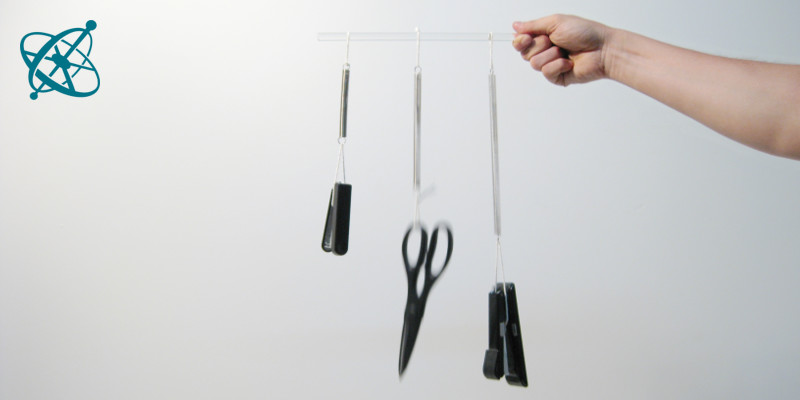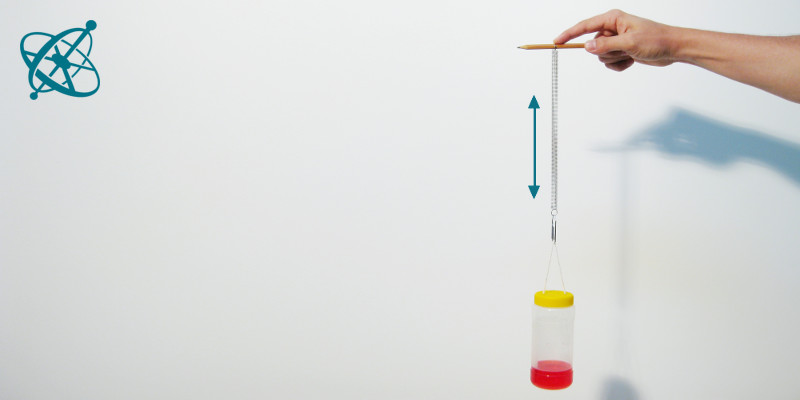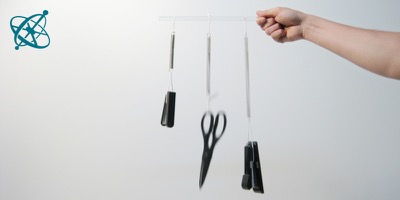 www.sciensation.org | Ciênsação hands-on experiments are published as Open Educational resources under a Creative Commons Attribution-ShareAlike 4.0 International License.
www.sciensation.org | Ciênsação hands-on experiments are published as Open Educational resources under a Creative Commons Attribution-ShareAlike 4.0 International License.
Can you make them all oscillate strongly at the same time?

What do you note as you move your hand faster?
Mechanical resonance
It makes a difference to read about resonance and to feel it for yourself. Grant your students this haptic experience. It will come in handy whenever you use springs to model more complex systems.
Experiencing the resonance phenomena of a mass on a spring.
The resonance frequency of a mass spring system only depends on the spring rate and the attached mass.
Hold up a spring with a weight attached to it. Gently make the weight oscillate up and down.
1. Using just the hand holding the spring – what exactly do you need to do to increase the amplitude, i.e. make the weight moving up and down further from the center?
2. What changes if you change the mass of the weight?
Instinctively, most students will be able to move their hand in resonance with the oscillating weight. However, careful observation is needed to note that the hand has to go up and down at a specific frequency, moving in the opposite direction as the mass. This frequency depends on the mass of the weight and the spring rate. To see the influence of the spring rate, let your students compare different springs or two springs in series.

